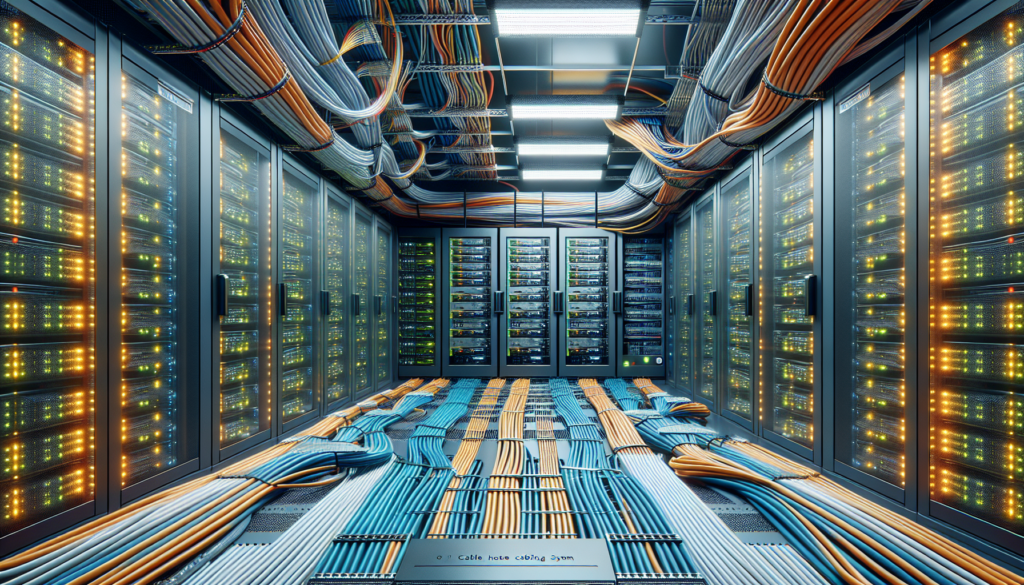Maintaining a robust and efficient network infrastructure is crucial in the modern era of rapid technological advancements. Structured cabling systems play an instrumental role in enhancing network performance. This article delves into the significance, advantages, and relevance of structured cabling systems for optimized network functionality.
In today’s fast-paced technological landscape, you need a reliable network to stay competitive. Structured cabling systems offer a scalable and organized approach to managing your network infrastructure. By implementing structured cabling, you can ensure better performance, easier troubleshooting, and future-proofing of your network environment.
What is Structured Cabling?
Structured cabling refers to a standardized system of cables and associated hardware that provides a comprehensive telecommunications infrastructure. It serves various uses, such as data transmission and voice communications. To understand its importance better, click here to explore how it underpins the foundation of efficient and reliable networks.
The structured cabling framework includes various subsystems such as entrance facilities, equipment rooms, backbone cabling, horizontal cabling, telecommunications rooms, and work areas. Each component is crucial in ensuring seamless connectivity and optimized network performance. By adhering to industry standards like ANSI/TIA-568, you can guarantee the quality and reliability of your network.
Structured cabling systems are designed to provide a unified and consistent approach to network infrastructure.

By following a set of standards and best practices, structured cabling ensures that all components work together seamlessly, regardless of the manufacturer or the specific application. This standardization not only simplifies installation and maintenance but also enhances the overall performance and reliability of the network.
The Benefits of Structured Cabling
One significant advantage of adopting structured cabling is its scalability. Your network can easily expand as your business grows without major overhauls or disruptions. Moreover, having an organized cabling system simplifies maintenance and troubleshooting. Technicians can quickly identify and resolve issues without navigating through a tangled mess of wires.
Another key benefit is cost-effectiveness over time. While the initial investment might seem substantial, the long-term savings on maintenance and downtime make it worthwhile. Structured cabling systems also enhance flexibility since they support multiple hardware uses and applications within the same infrastructure. Thus, they are essential for long-term sustainability.
Structured cabling also promotes better cable management, which is essential for maintaining a clean and organized network environment. Using proper cable trays, conduits, and labeling techniques can minimize clutter and reduce the risk of physical damage to the cables. This improves the aesthetics of your network infrastructure and facilitates easier access and maintenance when needed.
Relevance in Today’s Technology-Driven World
Structured cabling becomes indispensable in a world where businesses rely on high-speed internet and robust networking solutions. The demand for faster data transmission rates continues to rise with the proliferation of cloud computing, IoT devices, and video conferencing solutions. Structured cabling ensures that your network can handle these increasing demands efficiently.

Moreover, structured cabling contributes significantly to minimizing downtime caused by network failures or maintenance activities. A well-organized system allows for quick identification and resolution of issues, ensuring continuous operational efficiency. This reliability is particularly crucial for industries where every second counts, such as finance and healthcare.
Future-Proofing Your Network Infrastructure
Adopting structured cabling is also a step toward making your network adaptable to future needs. With technology continuously evolving, having a scalable and adaptable infrastructure ensures that you are prepared for future advancements. Structured cabling supports higher bandwidths and faster data transmission rates required by emerging technologies.
Furthermore, it allows for seamless integration with new devices and applications without extensive reconfiguration. As new hardware components become available, they can be effortlessly incorporated into the existing infrastructure. This adaptability makes structured cabling a strategic investment for businesses aiming to stay ahead in the continually advancing technological landscape.


More Stories
CanadaBit.AI Analysis: What Happens When AI Actually Makes Crypto Easier?
How Restful APIs Enhance OTT Platforms’ Capabilities and Improve User Experience in Streaming Services
Why B2B Brands Should Stop Chasing Perfection and Start Publishing